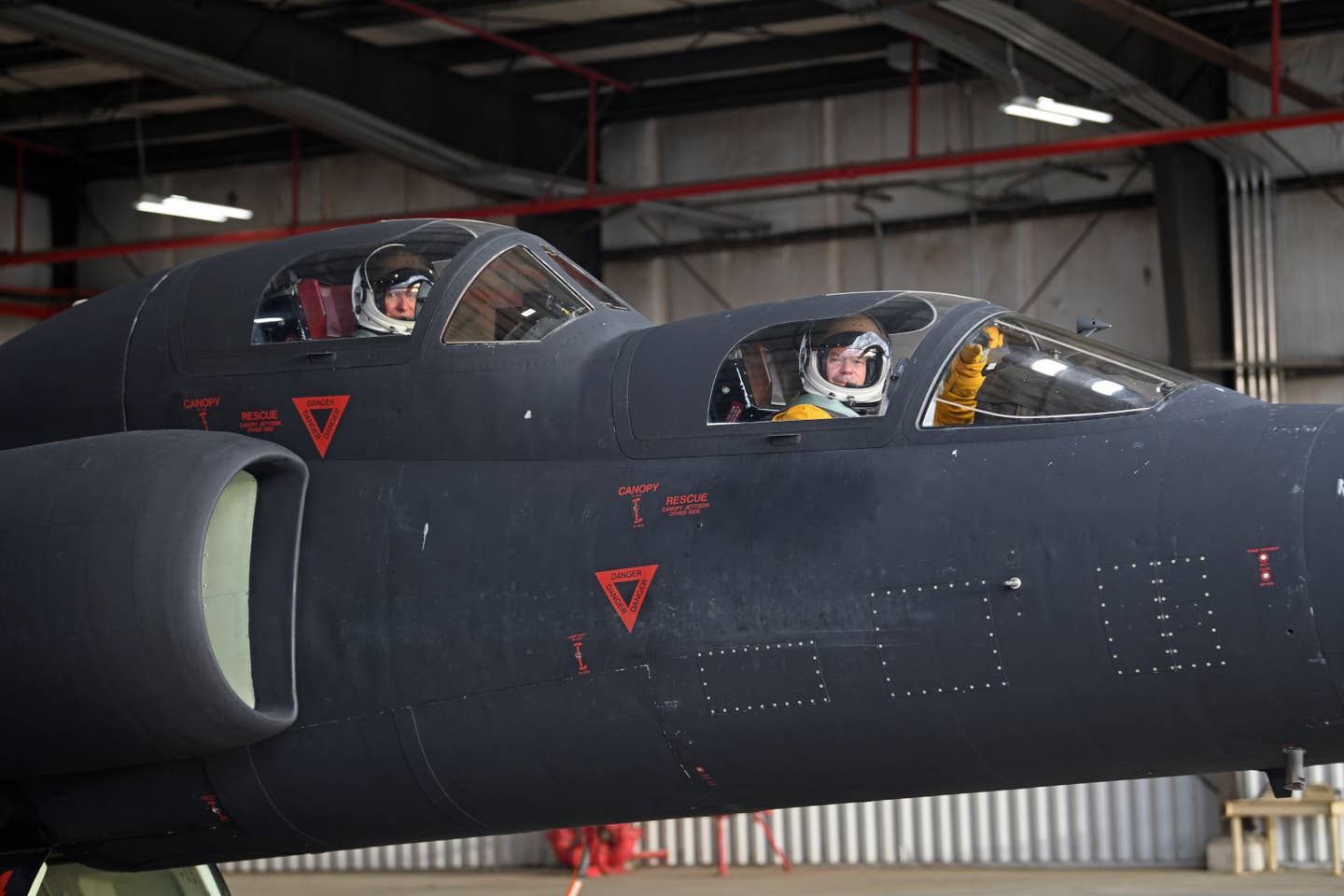
A picture has emerged of a Chinese spy balloon clicked from a US Air Force (USAF) U-2S Dragon Lady surveillance plane earlier this month while the balloon was traveling through US and Canadian airspace.
Advertisement
At least two U-2Ss were reportedly employed to monitor the balloon’s flight and gather intelligence about its capabilities before it was finally shot down by the F-22 Raptor off the coast of South Carolina using an AIM-9X Sidewinder missile.
The existence of at least one picture of the balloon captured from a Dragon Lady’s cockpit had previously been known through a CNN report on February 9, which said that “One pilot took a selfie in the cockpit that shows both the pilot and the surveillance balloon itself, these officials said — an image that has already gained legendary status in both NORAD [the US-Canadian North American Aerospace Defense Command] and the Pentagon.”
Aviation journalist Chris Pocock, an expert on the U-2 plane, posted the picture online on his website ‘Dragon Lady Today.’
In the image, the balloon can be seen with a section of it hidden by the wing of the U-2 plane, which also appears to cast a shadow on it.
The shadow’s shape indicates a possibility that at least one of the U-2Ss deployed for monitoring the balloon was a two-seat TU-2S trainer, which would have made it easier for the crew member sitting in the second cockpit to take pictures with a hand-held camera while flying close to the balloon.
Although, it remains unclear as of yet, whether this was the case.
Also noteworthy is that the image demonstrates the reason behind the U-2’s employment to monitor the balloon. The Dragon Lady can be seen flying above the balloon with its aircraft’s fuselage casting a shadow on it.
As discussed previously by EurAsian Times, the U-2 is known to be the only US military aircraft capable of flying persistently at altitudes exceeding that of the Chinese balloon, which was said to have been flying roughly between 60,000 and 70,000 feet throughout its voyage across the US and Canadian airspace.
The U-2 ‘Dragon Lady’ is one of the few aircraft that have served the USAF for over 50 years, including the Boeing B-52 strategic bomber, Boeing KC-135 tanker, and the Lockheed C-130 and C-5 transport aircraft.
Advertisement

U-2 is one of those iconic American aircraft that have had a very eventful history going back to the Cold War era, not much different from the legendary B-52 bomber, which has been a bastion of the USAF’s bomber fleet for nearly 70 years and will continue to remain for decades to come, as the service does not plan on retiring the bomber anytime soon.
The picture also provides an all-new look at the balloon with a top-down perspective of the payload suspended beneath it. According to US officials, the balloon had a diameter of around 60.96 meters, and its payload may have weighed about 900 grams or more.
READ MORE
What Intelligence Did The U-2s Collect On The Balloon?
The exact details about what intelligence the U-2Ss gathered about the balloon as it flew over the US are unclear.
Air & Space Forces Magazine reported, citing a senior US State Department official, that high-altitude reconnaissance flights of the U-2Ss enabled the US to verify that the balloon’s surveillance package comprised multiple antennas that seemed to have been intended for collecting and geolocating communications.
“High-resolution imagery from U-2 flybys revealed that the high-altitude balloon was capable of conducting signals intelligence collection operations,” the State Department official told Air & Space Forces Magazine.
Also, the U-2 flights reportedly confirmed that the craft relied on large solar panels to power its intelligence sensors.
Overall, the Dragon Lady is known to have been equipped with a wide array of sensors that could be used to gather high-quality visuals of the balloon and detect any electronic emissions that may be coming from it.
The common sensor package for the U-2S reportedly comprises the Senior Glass signals intelligence suite in the fuselage and two underwings ‘Super Pods’ when it is installed, along with either the Senior Year Electro-Optical Reconnaissance System-2 (SYERS-2) or Advanced Synthetic Aperture Radar System-2 (ASARS-2) in the nose of the aircraft.
Advertisement

The Senior Glass system can gather intelligence on a wide range of signals. The Senior Spear equipment inside one of the U-2S Super Pods can detect and monitor enemy communications. The Senior Ruby gear fits into the other pod and can locate and classify hostile radar emissions.
Also, there is reportedly an antenna farm along the underside of the fuselage that provides additional capabilities, including collecting intelligence on different data streams and the ability to geolocate the source of transmission more accurately.
The SYERS-2 is a multi-spectral camera system intended to produce high-resolution imagery of a target, even during nighttime. Its latest version, the SYERS-2C, is a 10-band multi-spectral camera with traditional electro-optical and infrared capabilities.
However, it can also produce images based on the electromagnetic signatures produced by different objects.
Advertisement

While the ASARS-2 also produces images, it uses a radar operating in a synthetic aperture mode, offering an all-weather capability. The latest version of the ASARS-2, the ASARS-2A, is a mechanically-scanned array radar.
That said, more details about the Chinese surveillance balloon and its capabilities might soon be announced by the US government, after its debris was recovered from the Atlantic Ocean off the coast of South Carolina on February 16.
Advertisement